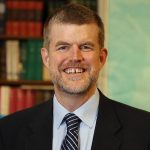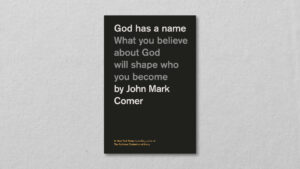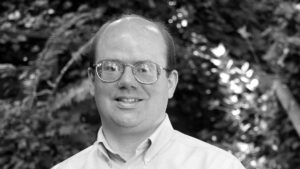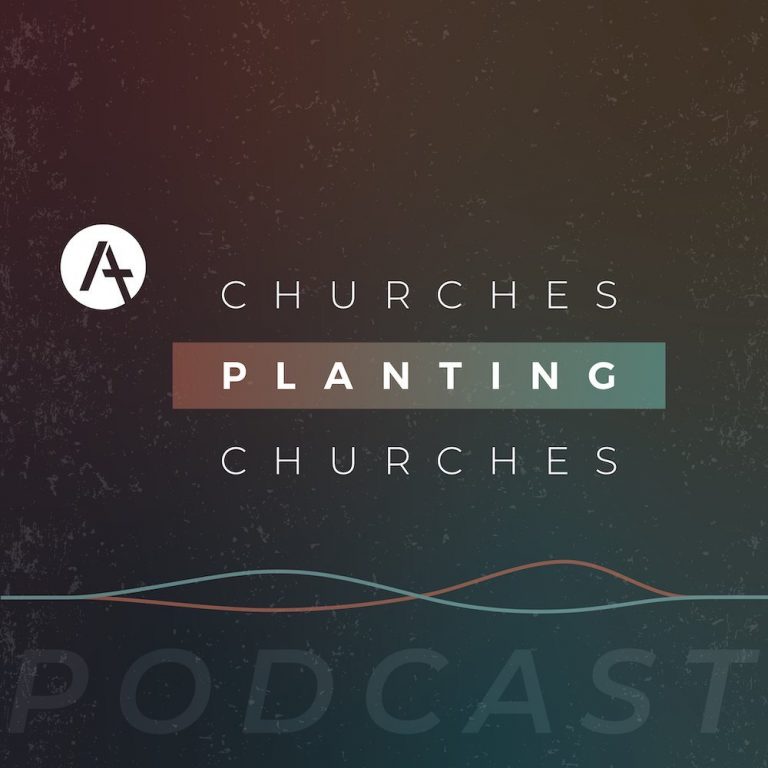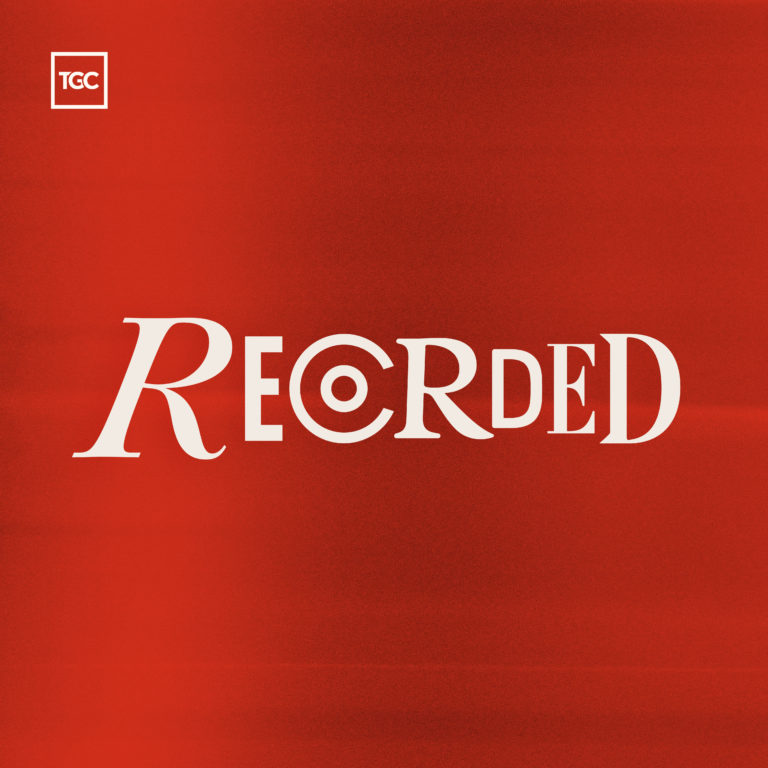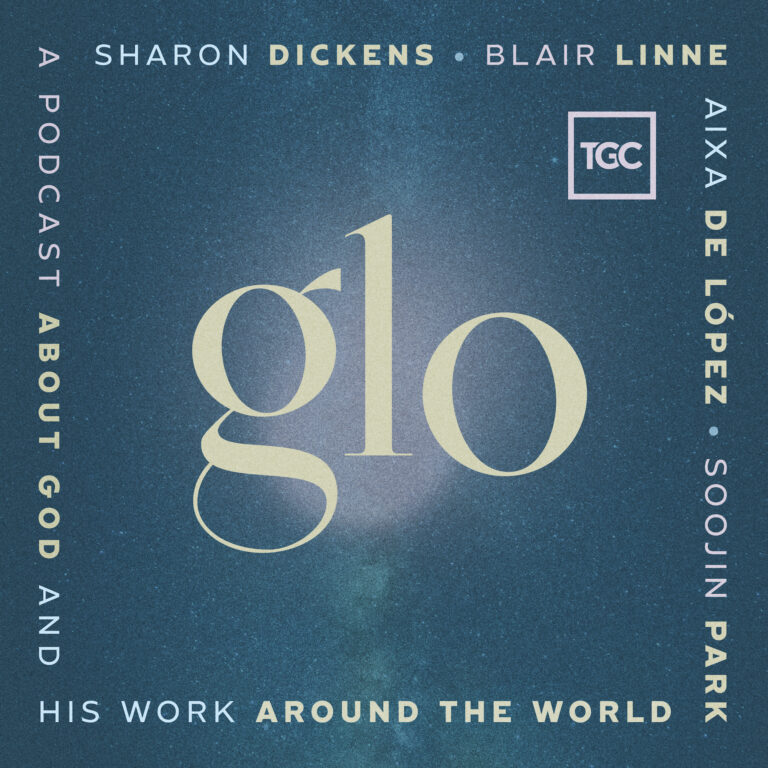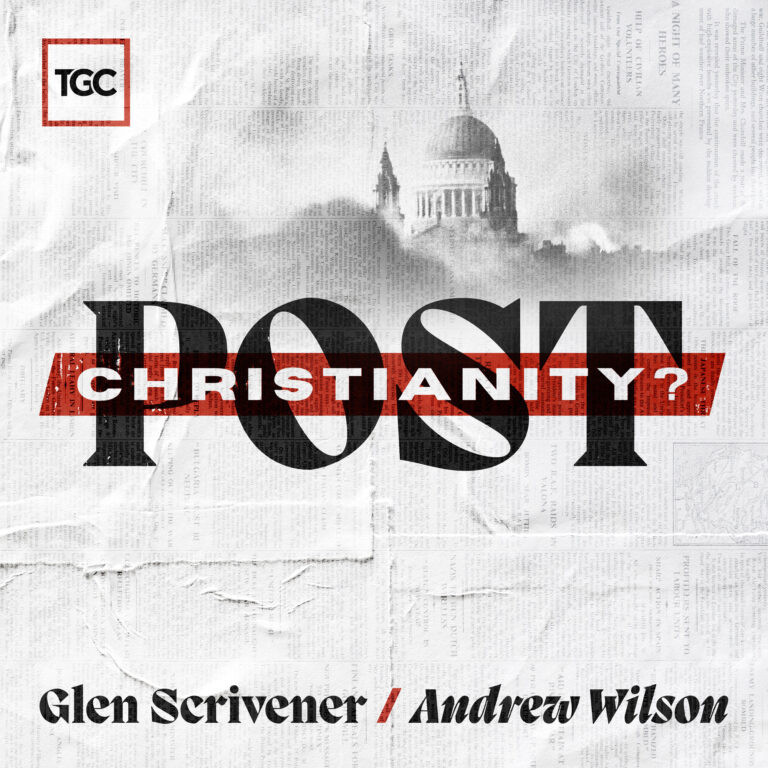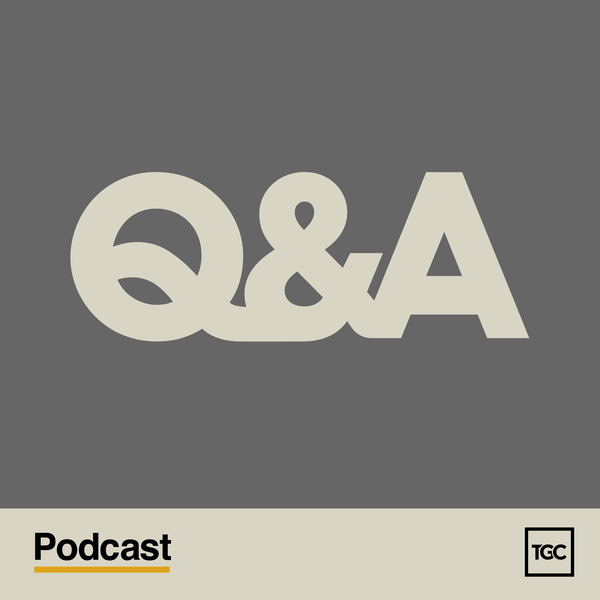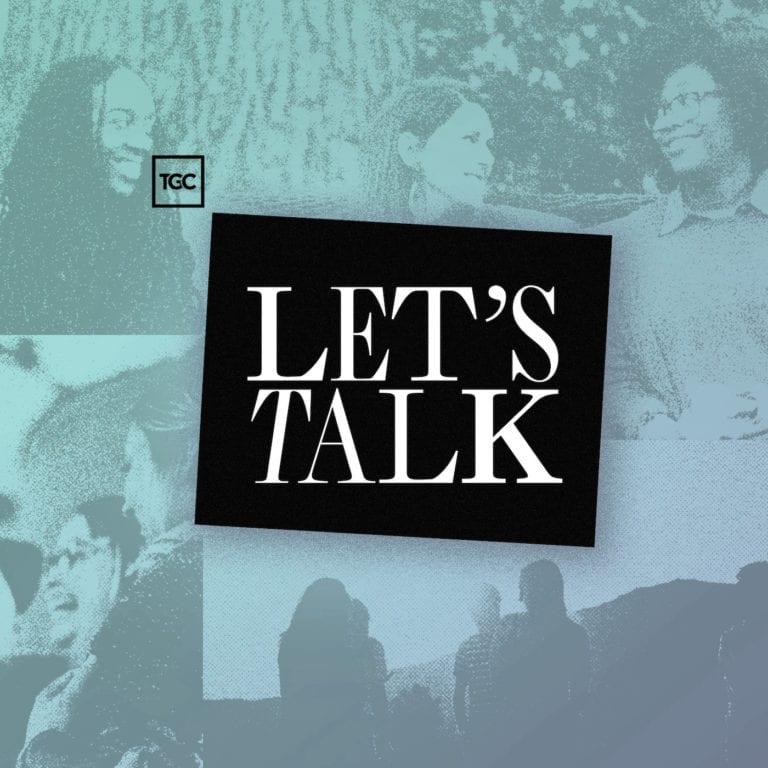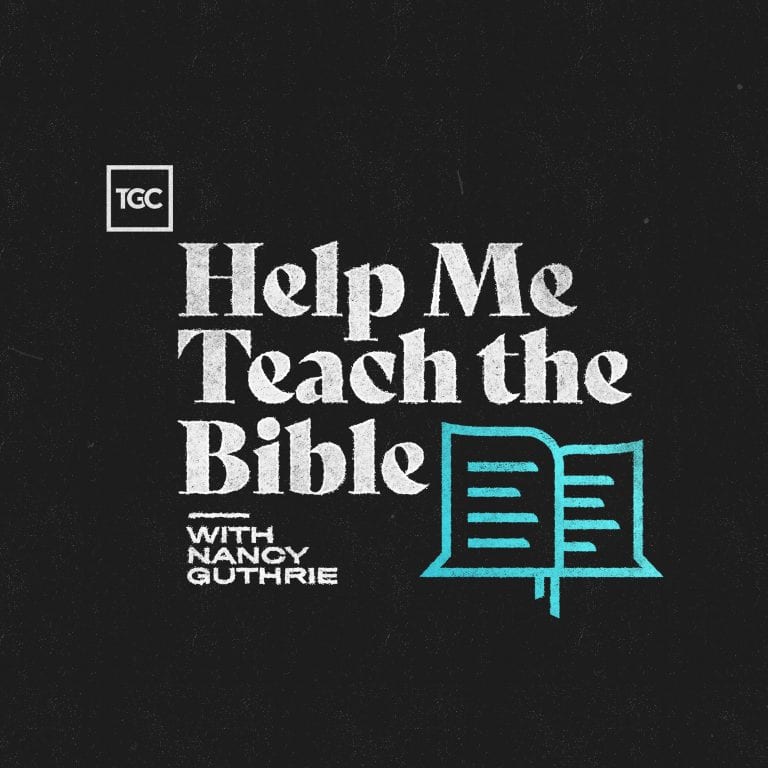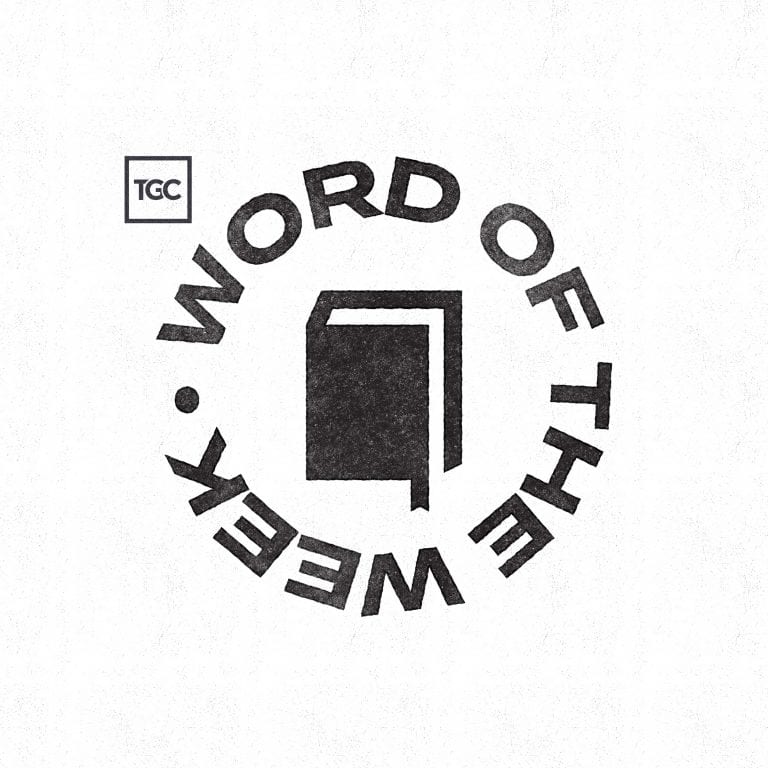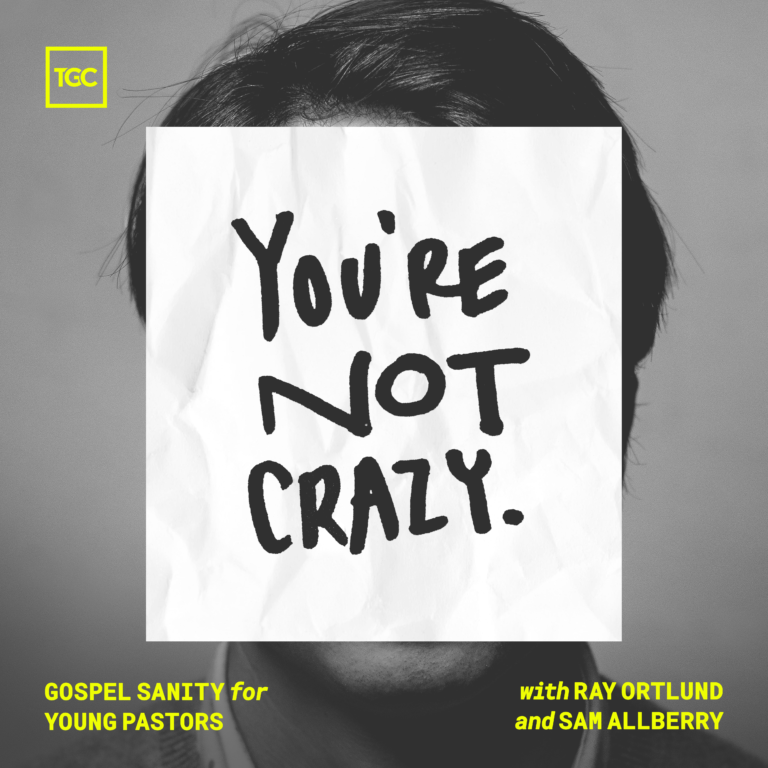In this episode of As In Heaven, host Jim Davis welcomes guests Ryan Burge and Michael Graham to discuss the dechurched in America—who are they and why did they leave? They discuss detailed insights about the 40 million adult Americans who have dechurched in the last 30 years and talk in-depth about the four different profiles of dechurched evangelicals.
Episode time stamps:
- Episode and guest introduction (0:00)
- Defining “dechurching” and why it matters (2:36)
- The research and how to understand the data (7:36)
- Six main profiles of the dechurched in America (14:04)
- A deeper look at cultural Christians (17:36)
- Understanding mainstream evangelicals (22:15)
- Demographics of people leaving the church (28:03)
- Opportunities to better engage the dechurched (33:06)
- Defining and understanding the BIPOC group (38:18)
- Understanding dechurching among the Catholic group (42:22)
- The role of education in the dechurching movement (44:49)
- College students and religious literacy (47:01)
- Closing thoughts and looking forward (48:02)
Transcript
The following is an uncorrected transcript generated by a transcription service. Before quoting in print, please check the corresponding audio for accuracy.
Jim Davis
Well, welcome to as in Heaven season three, my name is Jim Davis, I am your host, and the pastor of Orlando Grace Church, as in Heaven is a podcast with the gospel coalition that looks at one topic each season. And this season is looking at the deep churches of America 30 to 50 million Americans used to go to church but no longer do, making this the largest and fastest religious shift in US history. So our hope is to understand the shift how it’s affecting the very fabric of our society, why people are leaving, where they are going and what we can do to win them back. And I’m joined this morning by two guests, Dr. Ryan Berge and Michael Graham, we got to know Ryan, I guess around two years ago, when we were in the middle of recording our last season, we were trying to wrap our minds around what data actually existed on D church in America when we realized that there really wasn’t much data out there. And some of the data that did exist, was either older or really didn’t pass academic standards. So we engaged Ryan as the chief data scientist and sociologists on our research for this podcast. And we commissioned him to do an academically peer reviewed nationwide quantitative study. That’s a mouthful to prove or disprove this thesis. We are currently in the middle of the largest and fastest religious shift in the history of our country. And we proved it. And we then commissioned two more studies to better understand this phenomenon. And the results were very interesting and actually more hopeful than what we anticipated. So this data not only informed our podcast, but the three of us have contributed to a book called The Great to de churching, that will come out through Zondervan, in the summer of 2023. Ryan has also written a really helpful book on a related subject and titled The nuns. This is a book that unpacks the fastest growing category of religious self identification. So those who identify as nothing in particular, and not only is Ryan, an excellent sociologist, data scientist and writer, but he’s also a pastor of a church in Illinois. He very much sees the nature of the D churching phenomenon, from a very rare perspective as both an academic and as clergy. And we’re thankful for all the work that you’ve done with us on this topic on the book on the podcast. And we’re just really thankful to have you come on here today. So thanks for joining us, man.
Ryan Burge
It’s been an absolute pleasure working with you guys. Glad to be on the podcast today.
Jim Davis
And then our second guest is our executive producer, Michael Graham. Michael also works for the gospel coalition. Previously, Mike served with me at Orlando Grace Church as our executive pastor. So we have a lot of history together. Mike did much of the initial study design development, air traffic controlling for the study, and the data organization. So Mike, thanks for being here with us today.
Mike Graham
Glad to be here with you, Jim.
Jim Davis
All right. My first question, Mike, is for you. Can you tell us a little bit about why we decided to do an entire season on D churching. In America?
Mike Graham
Yeah, so in 2018, our church or Linda Grace Church hired us, Jim, to be our next teaching pastor. And we were doing some analysis together on our city, we’ve come across some data that said, basically 2 million people of the little over 4 million people in our metro area had the church, and at the time, that was 42% of our city. So from a military missiological standpoint, that was a jaw dropping number for us. So in our context, that meant that outside of gender, the single largest demographic in our city was people who were discharged. So me and me and Jim both kind of looked at each other and realize we were rapidly needed to understand a lot more than what was going on. So for two years, we read everything we could get our hands on, there was even tangentially related to D charging. And so as Jim mentioned before, as in Heavens, a podcast that does a deep dive on one really complicated subject per season. So because we’ve done all this, and you know, all these things were on our minds. And because there was urgency in our context, we knew that after our second season, delving into the, you know, the concept of racial racial justice in America, that we needed to do season three, on the subject of recharging, and so there wasn’t much data that was available. And what was there was unhelpfully old, the datasets were not publicly available for analysis. And those those things had not gone through like a university academic review, review board process. So that put me on a journey to put together an excellent team of sociologists, which included Ryan, who we’re obviously talking with here today, as well as Paul Joop. Who’s another excellent sociologist of religion and political science, to do a joint clergy an academic study on the G church D churching. phenomenon. So we can have up to the minute data as to what was going on. So over the course of 2021 and 2022, we conducted a three increasingly more granular studies on the charging each was several 1000 People surveyed with several 100 data points per person surveyed.
Jim Davis
Alright, so Ryan, I want to talk about this data a little bit, first, a little bit of defining terms, and then how we got the data, what the data means why we can trust it. So the first question is, can you give us a definition for de churching? And tell us, like how many how many teachers people in America there are roughly in when this phenom phenomenon roughly started to pick up steam?
Ryan Burge
Yes, that’s actually the first you know, the first goal of the research is trying to define this term that we all use, but we didn’t really have a strong definition of. So for us, we settled on the idea of de churching is people who used to go consistently to church at least once per week in their past. And now on the survey, they say that they go to church less than once per year. You know, we tried to belonging definition that didn’t really work as well, because some people can still belong to a church whenever we go to a church. So we thought attendance was the best way to describe a de churched individual. Based on that definition, we estimate that about 40 million adult Americans are D church. And we kind of you can kind of track the timeline, we ask people you know, when did you stop attending? When are you the board of the most religious when were you most religiously active, and we kind of see this cascade of events that happen, you know, the main line, which are like you’re not United Methodist, your Episcopalians United Church of Christ are moderate, or even liberal Protestants begin discharging first in the 1980s. Then Catholics sort of started D churches in mass, about 10 years later, evangelicals took a little bit longer, we see see in the data that the evangelical D churching really started in the mid 1990s, and has picked up speed through the 1990s in the early 2000s. You know, COVID is a difficult thing to add to this whole mix, because some people stopped going to church because they couldn’t go to church. So we’re not really sure what the long term impact on the church’s COVID is had right now. And we’re not even sure if we’ve hit peak right yet. Because the rate of de churching has begun to slow down as they’re just there’s not enough people who used to be churched. So there’s kind of a natural ceiling on the data when fewer and fewer people are going to church to begin with D church and can’t go up because they were never a church in the first place. But we’re already past the mark in America, we’re less than half of Americans go to church, never attenders are a larger number, one weekly attenders in America that happened somewhere over the last five or 10 years.
Jim Davis
So Ryan, anecdotally, my wife is finishing up her counseling degree at reformed Theological Seminary, here in Orlando. And when she was starting, she took an apologetics class, and she wanted to do her her final research paper on the de churching. In America, we’d been talking about a little bit. And her professor said, I would love for you to do that. But there’s just nothing out there. And what little is out there, he didn’t consider to be academically credible. So what I want to ask you what makes this different? Can you briefly explain why your data is more academically credible than what’s out there? And then how you go, how you go and get a big set of data on this group of people, how we begin to make sense of that data? And in that, can you briefly explain in very basic terms, because you’re a scientist, we’re not how you fed this big set of data, data machine learning algorithm, and how that spits out clusters of people with common answers. I’ve learned a ton through this process from you and Mike and others. And I just love for you to share a little bit about that with the audience.
Ryan Burge
Yeah, so we, the one, the one goal that we had was to make this as academically rigorous as possible, you know, this is not some church folks sitting around trying to, you know, make some day they, you know, a lot of unfortunately, in the event of community, especially, there’s all these statistics that sort of float around that have very dubious origin stories, they probably weren’t academically collected, you know, it’s probably like 500 people that, you know, ask at random church one day, we wanted to bypass all that stuff. And so we went to Qualtrics. And Qualtrics is a, a business grade survey platform that is used by people who work in market research, but also people who work in academia, they are considered, you know, one of the gold standard Panel Survey firms in America, they handle all this kind of stuff, soup to nuts, they have a terrific online platform to make surveys with that universities have access to, you can make your own survey and send it out yourself. Or you can make a survey with Qualtrics and then have them find people for you to do that survey. And that’s exactly what we did. We started with a survey of 1000 people because we had to just figure out what percentage of Americans were teachers to begin with? So we just did a random sample of 1000 people. They handle all that back end stuff. So they have a whole stable, they have a whole worksheet that says, you know, here we have people, how many people do we have under the age of 35? How many, you know, black people, how many women and if they need more of those kinds of groups, they can go right to that panel and say we need to take the survey, and then they pay people to take the survey, you know, it cost us five, six bucks ahead to do that. And they give Most of that to the people taking the survey. So we went to Qualtrics that gave us 1000 People, we have figured out what percentage are de churched, then we figured out what percentage of Americans wear T shirts, and we had them do a second much larger sample of just D church people. Now, we had to send all that by the way, all those surveys we did had to go through an institutional review board at Paul Juifs University, Denison University in Ohio, to ensure that what we were doing was academically rigorous, but also ethically Correct. You know, we’re not causing any harm to anyone. And so the data that we collected, we can use that data to publish in peer reviewed academic journals with it meets all the standards that anything that we put up, we actually use Qualtrics on our own for our own survey projects outside this project. So that just shows you how high level Qualtrics is and how well respected they are amongst quantitative social scientists. So we got that that huge second survey of a couple 1000 D church people, and then we try to figure out if we could feed that into an algorithm that would cluster those D church people into different types of D church people. So think about this, you know, we have a grocery store called Kroger, which is our local grocery chain all across America.
Jim Davis
I used to live in Mississippi. I know Kroger. Yeah, exactly. Kroger
Ryan Burge
is everywhere, they have a card, like a little card, you scan to get a discount on what you buy. And the reason they do that is so that they can target you for coupons and ads and promotions. Later on, they can kind of know what kind of shopper you are based on what you buy, in that little tag is what you know, tracks your shopping over time, they can tell when you have kids, they can tell when the kids leave the house, they can tell when your kids are getting older, just by what you’re buying. And when you’re buying it. They take all that data and cluster their shoppers into different categories of shoppers, let’s say empty nesters versus, you know, young professionals versus families versus retired people. And so they can target you with ads all using this clustering algorithm. Well, we did the exact same thing with the church people. And we said, Okay, let’s take like these 20 or 30 variables, we’ll feed it into the algorithm. You know, there’s 2000 D church people the 600 data points, and we said, make these clusters for this algorithm, and then we’ll try to figure out what is generating those clusters, think about algorithms are there a black box, it doesn’t give you a whole printout of why it created the clusters. But once you look at how those clusters are all sorted out, these patterns begin to emerge, where you can see the algorithms sort of making sense of what creates these different clusters, and what the hallmarks of them are. And so then, you know, the three of us kind of work together to say, Okay, this cluster has these characteristics, and this cluster has those characteristics, and hear how they’re different. And that’s really formed that, you know, the backbone of the book is trying to figure out what these clusters were and what they mean, and how they can be reached to come back to church.
Jim Davis
One thing that was fascinating to me that I credit you with, in the very beginning of these conversations, we found some data and you pointed out, but we don’t know the science behind it. They’re not telling you how they came to these conclusions, which is a big deal. Not only not only is your science publicly available, it has, it’s impressive to me the way it’s gone through this academically peer reviewed process. So it’s just been a really fun. Again, sociology, science, not my background, this has been a fun season to be a learner in how we get the data that we have. So you talked about these clusters, Mike, you took these clusters with Ryan. And then you were able to develop six profiles 66 clusters whose profiles emerged from the data very clearly, it wasn’t like we tried to create these clusters, the the algorithm, machine learning showed us these clusters. And we want to spend the rest of our time here in greater detail, talking about each of these six profiles, one at a time that emerged. So Mike, can you briefly tell us about these six to six profiles one at a time?
Mike Graham
Yes, absolutely. I’d love to cover so of the six profiles. There’s four different types of teachers to evangelicals. And then we also have a mainline D church profile and a Catholic teachers profile. It’s important to note that this is going to be an extremely high altitude sketch for the sake of brevity, for the sake of this interview. We go into much more detail in our book, The grantee churching on this, so. So first off, evangelicals comprised 15 million of the 40 million people who have have di, D church, adult Americans here. So this profile is the first profile of the D church evangelicals is a little over half of the group, about 8 million people. We call this first group of the four D church, evangelical groups, cultural Christians, because it’s unclear how many of these people in this group are actually Christians. The the extent to Which that there is an understanding of just basic Nicene Creed Christianity is relatively low. So this is why we’ve called this group, cultural Christians. This group was 58% male, with an average age of 40 years old, high marriage rates, high education, high income 98%, white, their center left politically, well, at the same time, they’re not critical of racial issues in America. They’re not critical of January 6. And they’re not critical of Putin, or Russia’s invasion of Ukraine. This group had the lowest orthodoxy score of any of the groups on very basic matters of Christian Christian beliefs. This would be things like the Trinity, Divinity of Jesus, humanity of Jesus, sinlessness of Jesus, the atonement, the resurrection of Jesus, and the reliability of the Bible. So only 1% 1% of this group believed the statement, Jesus is the Son of God, only 22% of this group believed the statement, the Bible is the literal word of God. So the group decided to leave the church for a reasons primarily of inconvenience, because they moved because their friends weren’t going or because they wanted greater sexual freedom. On average, they left around age 29, this would be around 2011, in terms of the average age of when they left. And what is interesting is that more than half of them are actually still willing to come back. So I imagine many in this group didn’t have a very substantive church experience, and the inertia of life, career money, kids, and work hard play hard mentality, ultimately won the day for them. The reasons are largely relational in wanting to make new friends, loneliness, or a friend or spouse that invites them, or they moved and they want to get plugged into a new community, in terms of reasons that they might want to come back. So that’s the first category of cultural Christians among de churched evangelicals.
Jim Davis
Alright, so Ryan, what do you think about the cultural Christians in this first group? What else stood out to you about this group? And what are some things that struck you as ways that either the churches themselves or church persons can better relate to this group?
Ryan Burge
Yeah, the one thing that I think is really, really easily overlooked in American public discourse about politics and religion is there are people in America who are left of center, but not far left of center, you know, center left kind of people, like I would say, like Bill Clinton Democrats, who, you know, that kind of is like an endangered species, especially in the online discourse, because it’s almost always like far left people versus far right people. There are a lot of people on issues, you know, let’s say abortion, where they’re like, Yeah, I’m not a huge fan of abortion, but I should, you know, I favor abortion on demand in the first trimester. That’s the kind of group that this group is, right. They’re not super, super liberal on, you know, issues of sexuality. They’re sort of, you know, moderate in the middle, they might be left or center on economic issues. And we sort of overlook those kind of old school Democrats, you know, especially in the discourse is always what they left because they’re woke, these people are decidedly not woke on these issues. They’re just a little bit more liberal on these issues and say, like your mainstream Evangelical, and it’s interesting, they feel like they’re pushed out of church, you know, that they don’t feel they don’t fit in the evangelical community because their politics are just slightly or moderately to the left of that group. It’s a very white group. You know, which evangelicalism at least the way that a lot of you understand that it’s a it’s a largely white phenomenon. They are also indicating despite the fact they have pretty decent incomes, that their mental health isn’t great. Things like depression, loneliness, anxiety, a really shocking high level of suicidal thoughts, which anything above you know, 1% on suicidal thoughts is obviously, you know, disturbing to us, but levels that we would, you know, typically income kind of tamps, those things down having more money makes you less depressed, less anxious, less lonely. That’s not happening with this group. I really think this group from just a sociological and pastoral perspective, is they need a sincere community to feel like they’re a part of, you know, they’ve checked the boxes in terms of education and income, they’ve done pretty well in SES factors. But they don’t have a sense of belonging, a sense of togetherness, a sense that they fit into a community. And they also don’t have a very strong doctrine. They don’t have they weren’t discipled Well, you know, from an academic standpoint, they don’t have a real, you know, solid foundation while you consider traditional evangelical doctrines. So I think a little bit more, you know, sermons that kind of focus on more, you know, deep dives on theological issues would be a good idea for this kind of group. And then, you know, just better engagement from the church, especially amongst young professionals and young families. That’s when those groups and I know personally when we had young Kids, I was the most lonely I felt my life because I feel like we couldn’t take them anywhere. Because they were, you know, they were getting in trouble all the time they couldn’t sit down. Churches are ideal places for people like that, in this cluster, a large number of this cluster fits into that group of people, they need a church to find a way to bridge that gap between their lonely island they live on with their little kids, and the church, we can provide all this help with support in, you know, spiritual and social formation, which it seems like they need.
Jim Davis
So, you know, one of the things that we’ve that I didn’t come up with this term, it’s kind of just out there, churches that are labeled Coldplay in a TED talk, and that sounds more probably mean that I mean it to, but what I’m hearing from you is a large part of this group might, you know, and the heart in that that vein is to be open and have people come in, but what I’m hearing you say, is that kind of church that doesn’t go deeper, could also be contributing to the problem. Is that what I’m hearing from you?
Ryan Burge
Yeah, I think that’s I mean, if you look at the data, and even, you know, this data source is lagging our ministries does like a deep dive in evangelical theology. And you see that very few people have like a consistent theological grounding. You know about things like the Trinity about things like the divinity of Jesus, about what the death and resurrection of Jesus Christ really meant. A lot of churches aren’t doing a lot of deep dives into those kinds of things. And it seems like, you know, a lot of churches are growing, because they’re preaching these superficial messages that almost seem like motivational speeches with a little Bible verses sprinkled throughout, in those, those do well, for a group of people. There’s no doubt about it, that’s drawing in a lot of people. But also, there’s other unmet needs amongst these other groups of people who had like a little bit more meat, you know, like a deeper dive into theological issues and discussion of, you know, Orthodox theology over time. And I think there’s so many churches in America, they don’t all have to be the same thing. You know, they can they can try to kind of cater to different people groups, in that, you know, Coldplay and TED talk is, is not bad, but you also need, you know, Coldplay and Tim Keller, right, with a little bit of more, you know, meat on the bones a little bit deeper dive in these issues. So I think pastors don’t, y’all don’t need to hurt towards one lane. There’s many lanes out there, and there’s many D church people out there 40 million, they all it’s not one size fits all, and every church needs to try a different strategy to reach this group, because it does seem like they’d be effective if they tried a different track.
Jim Davis
That’s helpful. All right. So let’s, let’s keep this moving. Let’s go to group number two, Ryan, what can you tell us about the second D Church of angelical? Group?
Ryan Burge
Yeah, you know, the we call these the mainstream evangelical D church. There’s very little difference between this group and the people who still go to church, you know, that’s really like the primary difference. They look in all these demographic factors like church go, and folks, they just don’t go, which is interesting kind of puzzle sociologically for me is like, what is the little switch that flips for them that says, I’m not going anymore. It’s a small group, only about 2.5 million people in this group. And the next group, they make up about 1/6 Of all the people who have left evangelical churches. So this is not, this is not most de churched evangelicals. They’ve de churched. Very recently, the overwhelming number of them of D church in the last three years 61%, female 91%, white, their education, income and marriage rates kind of look what we would expect, like in the general public to look like they don’t stand out on those topics. They have really high orthodoxy scores. 86% of them have the right answers the evangelical answers on these core doctrines of faith, almost all of them 98% said that Jesus is the Son of God, and had a very high view of the Bible, meaning a literalist view of the Bible. It seems pretty clear in the data that these are very orthodox, sincere, Christian people, these are not people who are doctrinal ly, you know, drifting on these issues. Their center right politically, there seemed like they know a lot about public policy. I would kind of put them as sort of like a George W. Bush style Republican. So you know, not the current Maga Trump that seems to have taken over the GOP, but more of the old style like your Mitt Romney, you know, even a George Herbert Walker Bush back in the day, and they left church for because they moved because it was inconvenient to go because COVID got them out of the habit. Or they might have had a negative experience with the church or the people inside the church. And here’s a really interesting statistic about this group. 100% of this group said they were willing to return to an evangelical church. So they’re not, they’re not floating out there. They’re actually willing to and eager to, in some ways come back to church. It’s just something in their life, kind of serves as a roadblock. They look for new friends, they want a good church. And they also are thinking that eventually God is going to convict them, you know, psychologically, and get them to go back to church.
Jim Davis
That’s really interesting. 100% of them believe they will return to an evangelical church. So What struck it pastorelli I guess sociologically to but what struck you, as you look at this group in terms of what the church can do to engage them better relate to them better help them make this return that they believe they will make one day.
Ryan Burge
I think race is an interesting component of this group, because at their center, right, we just talked about that, you know, sort of the old school, you know, style, Republican Mitt Romney style, but on racial issues, they actually tend to be a little bit left of center. So you know, a Black Lives Matter George George Floyd, systemic racism, institutional racism, they’re more willing to embrace those ideas, let’s say than a traditional Republican is. So I think race might be an entree point for a lot of pastors to think maybe, with this group, I could talk more about race, and I could talk about race and maybe a little bit less conservative direction, talking about more institutional causes, and less personal things. I think that’s a really interesting, you know, we kind of wrap race up with politics writ large. So if you’re a Republican, you believe these things about raise your Democrat, you believe those things about race, this group does not fit in that mold. So they’re a little bit more left to center on racial issues. But politically, they’re more right of center. They also have an above average value of owning a church that doesn’t just care about doctrine, but also cares about ethics as well. You know, that’s a really interesting point we just made about, you know, we should go deeper and you know, more meat, meat and potatoes kind of sermons, but they also care about ethics, like how to apply these doctrines in these very sticky situations like reparations, let’s say, which is an interesting political topic. But it’s also an interesting ethical topic, about retribution, forgiveness, and reconciliation, and, and all those kinds of things this group is they need, they need a friend, to get them back into church, they need a little bridge is what we call that, to get them from where they are back into the church community, they are overwhelmingly 100% of them said they’re willing to go back. And it does seem like in the day to day sincerely miss the church experience and feel like God is kind of nudging them in that way. You know, in the economics, behavioral economics literature, especially talking about nudges matter a lot, was just someone saying, I think you’re good at that. Or I want to remind you to get that done. That’s the kind of stuff this group needs. It’s just a nudge from a friend who goes to church that, Hey, you want to come with me this Sunday? That might be enough to get a lot of these people back in the pews, not a huge new advertising campaign, not a big Evangelical, reach out just one person tapping him on the shoulder say, Hey, I’m going to church tomorrow you want to go? Seems like in the day, this is the kind of group that would say absolutely, yes. And get back in church and probably stay in that church. They went back to if they got back in the door for the first time.
Jim Davis
Yeah, well, I appreciate the way you you mentioned, we’re not looking. Let me say like this, we kind of critiqued what we call TED Talk. And Copeland said talk. But then there’s other extreme too, that’s all doctrine and information that maybe not as emotive people, from what we’ve seen from the research grow up feeling like, Okay, I hear that, but how does the Bible address concerns in the world in justices in the world? So there are extremes here, and we need to make sure not as at church not to be drifting to one of these two extremes. All right, Mike, what can you tell us about the third de churched Evan Jellicle group.
Mike Graham
Alright, so we call this group the X vangi. follicles, because 0% of them are willing to return to an evangelical church. I know this term means one thing on the internet, and in the Twittersphere, but we’re using these terms maybe a little bit different than what you might have heard in those particular spaces. What you see online regarding exponential articles, is that these are people who are typically deconstructing their faith, oftentimes, entirely. And typically, the folks who are, you know, kind of doing these things online, maybe have a higher education, and maybe an above average income as well. I reached out to a couple different folks, because of kind of what we saw on the data in just some dissonance between, you know, how I would have thought about that term. And what we saw in the data, reached out to some folks who ran some large social media accounts kind of surrounding the extra angelical community to see, okay, hey, here’s some of the data of what we’re seeing. And can you just cross reference this with kind of your social dashboard on your back end with with respect to the, you know, the people who were resonating with the kinds of, you know, extra angelical, deconstructing content that you’re putting together? And oddly enough, what I heard back from those people is that who ran those accounts was that are actually our data actually lined up pretty closely. So namely, this x van Jellicle are largely middle aged women, with below average income in education. To be more specific. This group for us in our data set was 65%, female 82% white 13% Black with an average age of 53 years old. This group also had below average income, and education, marriage rate and rate of employment by far. Another thing that stood out was the relationship between this group and American institutions, namely, American institutions have not been working for this group. They have been left by the wayside, they feel disenfranchised, to virtually every institution in the United States. Interestingly enough, the group is actually doctrinally quite Orthodox, they were the second most orthodox of any of the groups that we looked at in terms of the clusters, de churched, or mainline or Catholic 97% of this group believed that Jesus is the Son of God, in this group had the second highest view of the Bible behind the mainstream group that Ryan just outlined. The group is also over overwhelmingly self identifies as independent, politically 59% of this group see themselves as political independence. So you can see how this group has very much been left by the wayside by our two party, political system as well. Now, they lean center left policy wise, okay. But, you know, again, very, very disenfranchised from American institutions, and the ways in which things are, you know, structured in American culture in society, the group is deeply allergic to racism, deeply allergic to misogyny, deeply allergic to partisan politics. And art has very high concern for how vulnerable people are treated. It seems clear that many in this group had been subjected to many of those things, racism, misogyny, being left behind by partisan politics in our vulnerable persons themselves. This group, left church because they didn’t fit in relationally. They didn’t feel loved from the church. They had bad experiences with both individuals in the church, and the church as an institution itself. And they had significant disagreements politically, with the church, with the congregation, and with their clergy. Again, I want to reiterate, 0%, of this group are willing to return to an evangelical church, they are done with this type of expression of the Christian faith. However, interestingly enough, they are still willing to return to a different expression of church, and the things that they’re looking for, for the type of church that they would be willing to return to, again, not an Evangelical Church, they’re willing to go to a church that has a good pastor that’s healthy, that where they, if they feel that God is moving in their heart, to push them back towards church, and they’re willing to return if they find a church that cares about justice and compassion for vulnerable people.
Jim Davis
All right, so Ryan, let’s, let’s take that’s the data. Let’s take this data and work it into the churches, the church leadership, what do you see as opportunities for us to relate to them better engage them better? It’s such a different group, going from 100% willing to return to 0% willing, I would imagine, the way that you look at engaging and relating to this group would be very different.
Ryan Burge
Yeah, first, I gotta say that, that when we started working on these working through the clusters, and what they look like, you don’t tell the algorithm, what is the most important variable, what you really want it to focus on? It figures it out on its own? It almost feels like magic? In some ways. You’re like, how did it How did it know? Like, how did it figure that thing out? And why, you know, why did it matter so much? Because when it says, like the Evangelical, would you go back or not, and one group gets 100%, and one group gets zero 0%, it somehow sorts out. That’s what we cared about, when we’re in this is really a sort of this pin, in some weird way, the defining question of these clusters, and really sort of sorted them out and just see them sort of Xena like 60% 40% 30% 80%. No, it was 100% in one in 0%. Another is a huge deal, because it’s saying like there’s something really key about their orientation to evangelicalism, specifically that’s driving these clusters and making them different. So you know, that we need to really kind of ruminate on that very much. You know, like how event your view of evangelicalism matters more than almost anything else when it comes to you know, what kind of D church do you are they they can smell racism, misogyny, partisan politics from a mile away, and they won’t have any of it. You know, they are the kind of people who would say, I won’t go back to that evangelical church because you don’t have any people of color in your leadership. You don’t have any women, you know, on your pastorate. These are the kinds of people who look at evangelical doctrine, and not just, you know, theological doctrine, but also what kind of what’s become the political and social doctrine of a lot of these evangelical churches and say, Yeah, I’m allergic to all those kinds of things. I want a church that’s inclusive, that’s welcoming that has, you know, female pastors that has racial diversity, not just in the pews, but also in the pulpit. They there, they are hurt by church, you know, that they clearly there’s, they’re reacting to something in American events. alcoholism, and they are walking away in a doesn’t seem like they have any desire to go back. And remember, you know, we talked about, you know, not every church has to be the same thing. They can be different things. And these are the kinds of people who would go back to a church that is decidedly not evangelical. Right. So a mainline church, United Methodist or Episcopalian, although in a lot of places, those churches don’t really exist anymore, they would be much more drawn to those kind of, you know, organizations and they would a traditional Evangelical Church, they’re looking for a church that is, isn’t partisan, or at least is bipartisan, right. So you know, kind of gives it both the left and the right. They want doctrine and ethics to be taken seriously. They want a church that deeply empathetic, and they really want a church that makes investments in the mental health of the church body, both individually and corporately. These are the kinds of people who would have left evangelicalism for the mainline a long time ago. And in many places, like I said, they don’t have that option anymore. So now they went from being churched evangelicals to D churched. People entirely, because they just can’t find a church that checks those boxes they need. Alright, Mike,
Jim Davis
let’s move to the last group that we’re going to address. In this episode, the last group of D churched. evangelicalism, this bipoc group.
Mike Graham
So we call this group bike bipoc. And what that stands for is black, indigenous and persons of color. This is a technical term, it’s an acronym, the 0% of this group, this fourth group of D church evangelicals is white. Now, it’s important to note here, and Ryan’s kind of hit on this a couple times, that the, the algorithm, we did not give it the ability to see people’s race or ethnicity. So when the algorithm sorted, you know, these, these four different types of D church evangelicals into different groups, it did not have the ability to see race or ethnicity. So it is fascinating. That of, you know, the first group was 98%, white, the second group 91%, white, the third group 82%, white, this last group is 0%. White. So you know, and kind of talking with Ryan about this, you know, sometimes Ryan would talk about how this is basically the the idea of a shadow in the data. Ryan, do you want to kind of explain just briefly before I, you know, kind of flush this out a little bit more like what a shadow in the data is?
Ryan Burge
Yes, it’s the, you know, this idea that algorithms are not racially motivated. They don’t see race, they don’t see gender, they don’t see, you know, things like race color, all this data, like it’s always just kind of looming over there’s a book called algorithms of oppression that say that algorithms actually make racial inequities in America worse, not better. Because race kind of plays into every other variable that we included in the data set, including education, or income, urban versus rural, I mean, all these things are impacted by race. And again, it’s just really fascinating. We didn’t say we want you to create a non white cluster, and it’s like, Okay, I’ll do that. It just so race is is really defining characteristic in the data over and above things that we would think about, like partisanship, or education or income or age, it said, wow, race really, really matters. And these non white people are distinct from a statistical standpoint, from the rest of the group. And I think it tells you, you know, we talked about race being one of the defining cleavages in American life, and an algorithm, the fact that an algorithm can see that tells you that it’s not just a theoretical thing, it’s actually something that shows up in the data, generally speaking, but also in our data set as well.
Mike Graham
So, you know, as we’re kind of looking at this fourth group, the bipoc, D, church, evangelical group, one of the things that Ryan really tried to impress on me and Jim, from the outset, is that this large data set will always have things that surprise you, and don’t fit into clean and simple narratives. So like the mainstream evangelical group, in an extra angelical, there are about, again, about two and a half million people in each of those three groups. So you know, that the second, third and fourth groups that we’ve covered mainstream evangelical D Church, the expanded articles, and the bipoc D church, evangelicals, each of these groups is about two and a half million people. So this group, interestingly enough, is overwhelmingly male. 68% of the group were men. The average age of this group today is 51. But the average age when they left the church was 27. Meaning on average, this group left the church in the in the very late 1990s, making them some of the very first evangelicals to the church. The group was 76%, black and 15% Hispanic. What that means, when you put that together with with gender 52% of this group were black men, meaning over one and a quarter million black men have left evangelical churches, and most of that was in the late 1990s. Here’s where things get even more interesting. This group had the highest income and the highest education of any D church or church group. We’re talking over six figure incomes with graduate degrees and PhDs. On average. The group scored similarly to cultural Christians, and D church mainlanders on the on the orthodoxy score of 58%. They leaned independent in terms of party self identification, and Senator left policy wise, United States institutions weren’t nearly as bad for this group, as the dismal rates that we saw among the extra angelical group. However, this group still achieved in spite of those institutional failures. So while this group had very negative views on institutions like the criminal justice system, and police, they did not seem to experience racial issues as being widespread as what you may have thought compared to some of the other groups. It’s important to note here that these attitudes expressed here are not likely well presented among other bipoc persons, as I don’t think this group is actually a very representative subset sample among by persons in the United States, primarily for the reason that every single person that was in this group willfully chose for an extended period of their life, to attend an evangelical church on a weekly basis, or at least on a monthly basis. And so given the large scale demographics of evangelicalism itself, being overwhelmingly white, most of these folks by corollary chose to attend white evangelical churches. So I don’t think the average black person in America has chosen to, you know, attend on a monthly basis, a white evangelical church. So that’s why this group is a really interesting group of people. Probably not representative of the larger population. But it is very interesting to note that there’s a group of, of people who are 52%, you know, black men with very, very upwardly mobile, very highly educated, very high income by far the highest income by far the highest education. And these people left the church, evangelical churches in the late 90s. Fascinating group of people.
Jim Davis
So those are the first four groups those are groups of evangelicalism have de churched. But Mike, we have two more groups, we have main lines that have de churched. And we have Catholics, Roman Catholics who have D church, what can you tell us about those groups?
Mike Graham
So the, the Catholic in the mainline D church groups are incredibly similar. As I mentioned, before, the mainline group started to the church a little bit before the Catholic Church, both really started picking up steam in the late 80s and early 90s. While evangelical G churching, has been increasing exponentially. The D churching. The shape of determining among mainline and Catholic has looked like a steady linear increase, instead of like a hockey, you know, a hockey stick stock chart, you know, at least for the last couple years. So both groups are older and age in their mid 50s. Today, both de churched in the 90s. And both groups were most religious in the early 1990s. The mainline teachers are overwhelmingly women at 68%. Whereas the gender split among the church Catholics was roughly 5050 income and education were a little bit below average, for both groups. full time employment is low in retirement rate is very high among both groups, because of their the rate of age and gender probably also plays a role in that particularly for the you know, the 60% Mainline, being female, mainline D churched were 95% White, whereas Catholics were a little bit more diverse. At only 77%. White. A lot of that’s primarily due to the higher rates of Hispanic and Latino D churched. among teachers Catholics, their orthodoxy score was roughly as bad as the cultural Christian and the bipoc group. Both groups also had a quite low view of the Bible that both groups were center left party and policy wise, mainland de churched or disproportionate to the southeast and Catholic the church were disproportionate to New England. Both groups looked very similar to x angelical in the extent to which they were allergic to racism, misogyny and Christian nationalism. The biggest reasons for these groups deep searching were things like moving inconvenience, political political disagreements, other priorities, clergy scandal and their faith just not working.
Jim Davis
Alright, Ryan, I want you to do your thing. What with these last two groups should the The Church here, what’s low hanging fruit opportunities? Things we need to say?
Ryan Burge
Yeah, a couple of things I want to point out as we’re seeing in Michael’s talk about this a lot is the discharging for a lot of these people happen in the 1990s. That’s a really key moment. I think, in American, you know, social and religious history, we saw that the share of young people who identify as Christians dropped 14 points between 1991 and 1998, which is the fastest and shortest period of time drop we’ve seen in the last 50 years. So something happened in American life in the early 1990s. It didn’t just impact you know, our teachers, evangelicals, but also our teachers mainline or Detroit Catholics, and we’re living is sort of in the residue of that moment in American history. But this group is really interesting. Because, you know, on the surface, Catholics and mainline Protestants may seem different. But if you look below that stuff, they actually are very similar in how they view things like the prosperity gospel, you know, they’re less likely to grab on to that is, you know, let’s say an evangelical is, they’re less likely to describe themselves as Christian nationalists are about 10 points lower on the Christian nationalism scores for both mainline and Catholic you know, 29% versus 20%. So these groups are not, they’re not right wingers, right. They don’t kind of buy into traditional evangelicalism kind of things. But this is something that really, really important, I actually wrote a piece about this that’s going to run an RNs, hopefully, this week, is the idea that increased education actually decreases the likelihood of D churching. For this group, there’s this kind of common conception that rolls around evangelical circles. If you send your kid off to college, they’re going to learn about, you know, atheists philosophy, like Nietzsche, they’re going to come back quoting that to you, and they’re going to leave their church behind. There’s actually no evidence in this dataset, specifically, that education leads to a higher level of teaching, but also just in the broad, broad data sets that don’t focus on this education is actually negatively related to becoming a nun, meaning people who are more educated are less likely to be nuns, not more likely to be nuns. And we see that again, with the D churching. Thing. Education is not leading people to walk away from church, whether it be Catholic mainline or evangelical. So really, that’s if you’re looking for a boogeyman to point out education is not that Boogeyman. It’s something else going on in the culture, that is a little bit hard to quantify the just how many years of college did you finish?
Jim Davis
Well, let me I mean, that’s fascinating to me, because we do here, you know, prepare your kids well to go into college, because that’s where they get them. That’s where their higher education, whatever, but But you’re saying that that is not supported in this data?
Ryan Burge
No, not not at all. And there’s other data, we looked at college students as they progress through college, they were asked religious literacy questions at every stage, you know, things not just about their faith tradition, but other faith traditions as well. And kids who score very high on those religious literacy questions are just as likely to be Christians as those who score very low on those religious literacy questions, too. So really, that mean, it’s really hard to make an empirical claim to education, Dr. Faith, whether it be Christianity or another faith that somebody is actually makes them more firm in what they believe, because they are challenged, kind of in a welcoming, you know, non hostile environment to really think about what they believe. So you want to come to D churching. Do not point at people like me as college professor, because you’re the reason that people are leaving the church. There’s just no evidence of that in our data, or in any data I’ve ever looked at.
Jim Davis
Well, you know, we don’t have time for this on this episode. But I do want to say you have some really interesting research out there people can Google on why the 90s contributed to the D charging, I think it might have been at RNs, I can’t remember, but you do some really the fall of the Soviet Union. Other things, the rise of the Religious Right. So I would commend that to people because it is very interesting. I think we need to ask what happened in the 90s, again, outside of the scope of this episode, but I commend it to people who want to google it and pursue it. Guys, this is both say fun, interesting, sad, there are a lot of emotions that I feel when I hear you guys talk about it, but I’m really thankful. You know, when we started thinking about season three of this podcast, really two years ago, we didn’t want to just have I mean, anecdotal is a part of it. Experiential is a part of it, but we wanted something more academically reliable, and in you two have really provided that and Ryan, your, your lifetime of of recent work in the in the academy, but also in the church. There very few people that bring those two passions together. And I really appreciate your time on this project, which has been significant. I know that and just giving us your time here. Your work for the book, I’ve just, every time I’ve been able to interact with you. I’ve really appreciate it Mike Graham, you are like nobody I’ve ever met before you are a true gift to the church, and your passion for datasets and spreadsheets and algorithms and analytics. I guess I appreciate it, because I’m nothing like that. So those are not my strengths. And maybe that’s why we make a good team. I’m really thankful for you too. I also want to say before we finish that one of the things as we were all delving into the data was that there were pretty two significant groups that became clear to us and and I want to give Skyler flowers some credit for the coinage of this, but we have the casually de churched and the teacher and the the church casualties. So casually, the church, they moved to a new city, they got busy, they did, they made friends, you know, golfing Sunday morning, whatever it was sleeping in Sunday morning, line dancing, whatever people do. They got busy, didn’t miss church. And so they casually not intentionally stopped going to church, that group increased significantly during COVID, as they didn’t go to church for 18 months, decided their life is okay for whatever reason without going back to church. So you have this casual side, and then you have the church casualties. There are very specific pain points. Sometimes it’s the church’s fault. Sometimes it’s a disagreement and certain things, maybe sexual ethics, other things, sometimes it’s a combination of the two. So what we want to do in the consecutive episodes after that is really look at the casualty, the church, the church casualties, flush these out, and help the church to understand how we relate to these groups, how we interact with them, and not looking at the deep church as a one size fits all with this, you know, pamphlet that we can walk anybody through and bring them back. So guys, I’m excited for the season. I’m excited for the podcast for the book for just the opportunity to work with you to and learn with you too. So thank you both so much for what you’ve done in being here with us today.
Ryan Burge
It’s been a pleasure we really appreciate the opportunity to work on the project was was a lifelong dream for me. And I think the data is going to be so helpful to the church here. And then going forward. We’re learning stuff we did not know before. And that’s all because of the collaboration between all three of us. It’s been a really, really wonderful project to work on. And I’m glad that we could put that out in the world next year.
Mike Graham
I also agree, thanks. Thank you so much for having us on, Jim.
Jim Davis
Well, stick with us for more episodes, fleshing out the dechurching that’s going on in the United States, why they’re leaving, where they’re going and what we can do to bring them back. Blessings.
This episode is part of As In Heaven’s third season, devoted to The Great Dechurching—the largest and fastest religious shift in U.S. history. To learn more about this phenomenon upon which the episodes of this season are based, preorder The Great Dechurching by Michael Graham and Jim Davis.
“The Most Practical and Engaging Book on Christian Living Apart from the Bible”
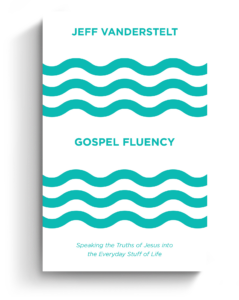 “If you’re going to read just one book on Christian living and how the gospel can be applied in your life, let this be your book.”—Elisa dos Santos, Amazon reviewer.
“If you’re going to read just one book on Christian living and how the gospel can be applied in your life, let this be your book.”—Elisa dos Santos, Amazon reviewer.
In this book, seasoned church planter Jeff Vanderstelt argues that you need to become “gospel fluent”—to think about your life through the truth of the gospel and rehearse it to yourself and others.
We’re delighted to offer the Gospel Fluency: Speaking the Truths of Jesus into the Everyday Stuff of Life ebook (Crossway) to you for FREE today. Click this link to get instant access to a resource that will help you apply the gospel more confidently to every area of your life.
Jim Davis (MDiv, Reformed Theological Seminary) is teaching pastor at Orlando Grace Church (Acts 29), and a Council member of The Gospel Coalition. He is the host of the As in Heaven podcast and coauthor with Michael Graham of The Great Dechurching: Who’s Leaving, Why Are They Going, and What Will It Take to Bring Them Back? He and his wife, Angela, speak for Family Life’s Weekend to Remember marriage getaways. They have four kids. You can follow him on X.
Michael Graham (MDiv, Reformed Theological Seminary, Orlando) is program director for The Keller Center. He is the executive producer and writer of As in Heaven and coauthor of The Great Dechurching. He is a member at Orlando Grace Church. He is married to Sara, and they have two kids.
Ryan Burge is an assistant professor of political science at Eastern Illinois University. Here lives with his wife and two boys in Mt. Vernon, Illinois, where he is pastor of First Baptist Church. He earned both an MA and PhD in political science from Southern Illinois University in Carbondale. He is the author of The Nones: Where They Came From, Who They Are, And Where They Are Going (Fortress Press, 2021).
